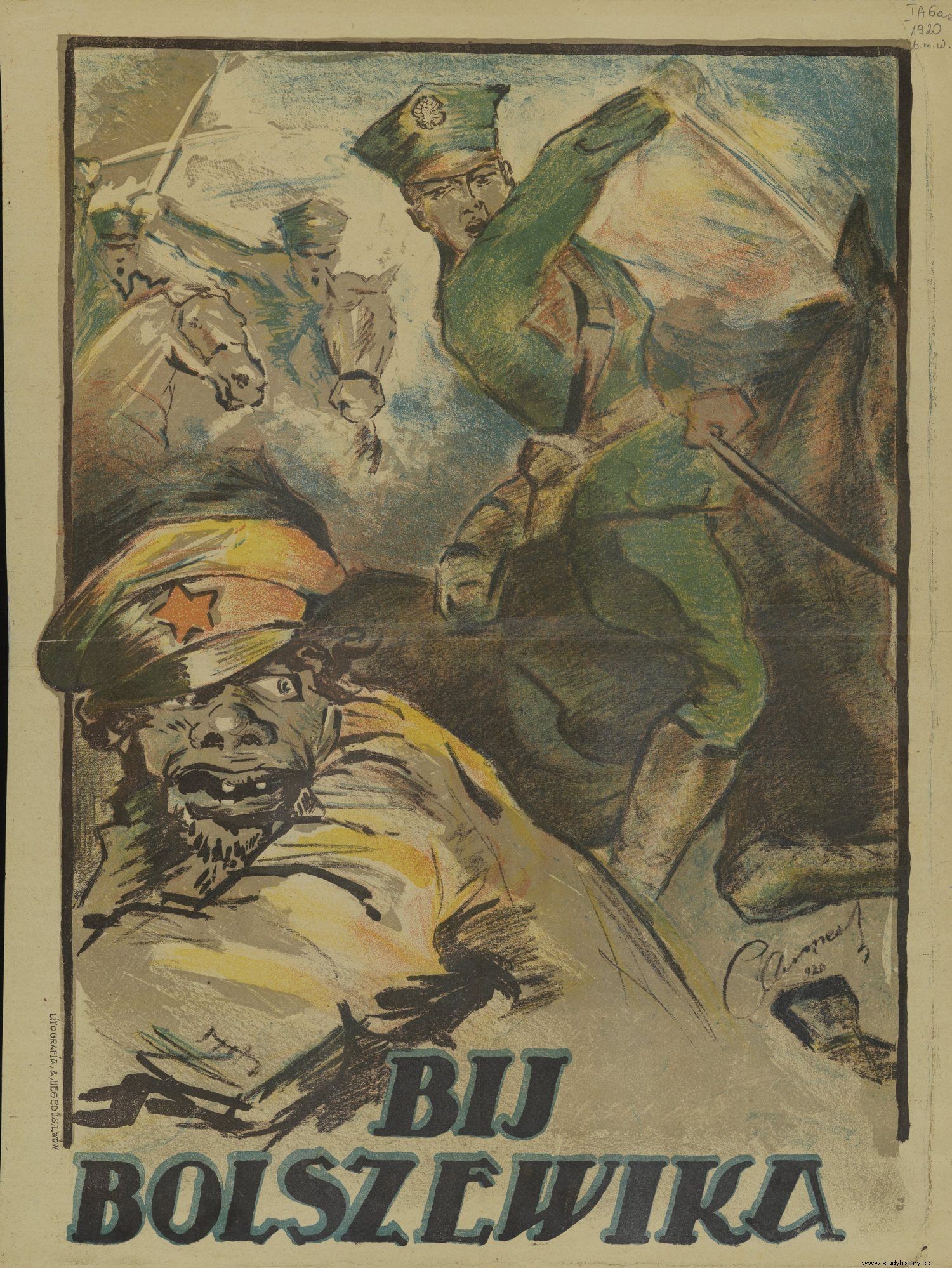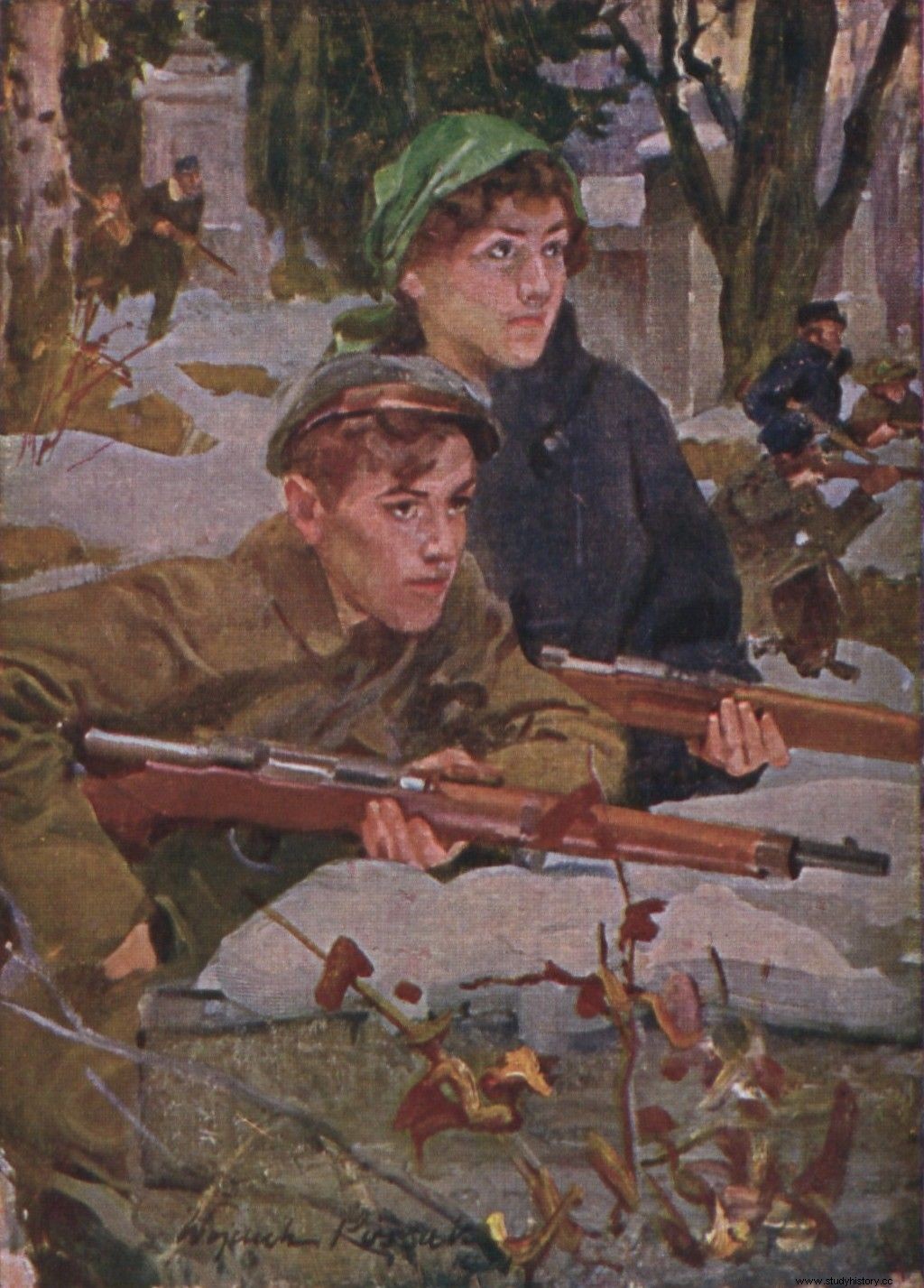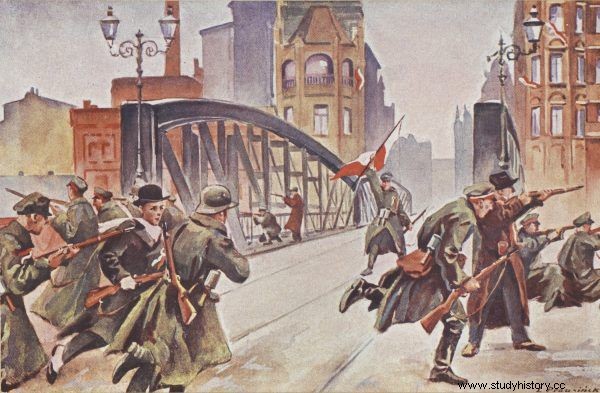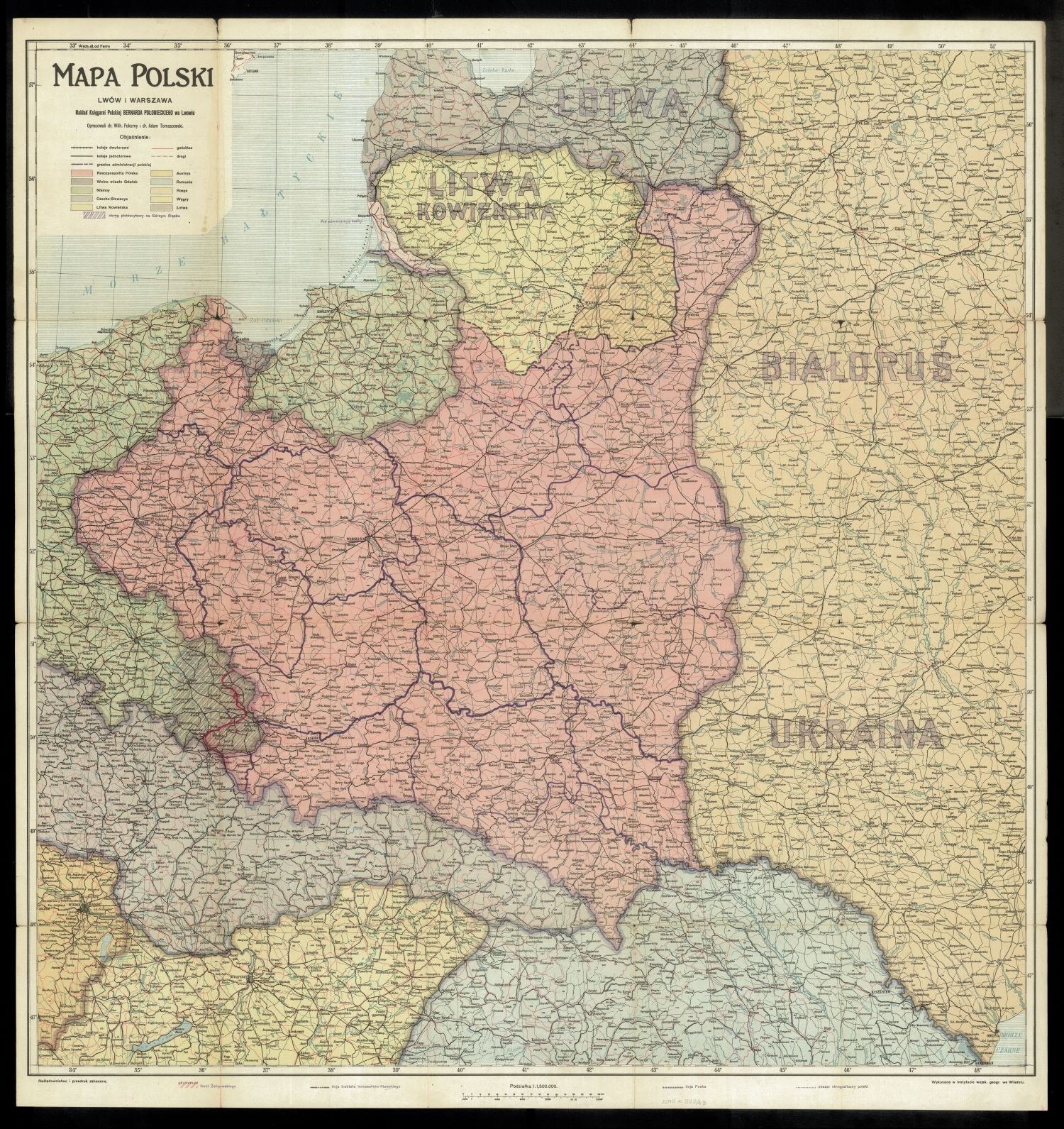November 1918, when Poland reappeared on the map of Europe, was only the beginning of a bloody and unequal fight for the future borders. How many Poles died then? How high was the price of independence?
January 1919. Paris. The most important politicians and diplomats from all over the world came to the French capital. Of course, the Americans, the British and the French were in the lead. The aim of the meeting was to put the situation in Europe in order and to find a solution that would ensure a lasting peace. It was also intended to impose penalties on the defeated Germans in the war and establish new European borders.
No wonder that representatives of the Republic of Poland reborn at the end of 1918 also attended the conference. The Polish cause was represented by Roman Dmowski and Ignacy Paderewski. In the country, Józef Piłsudski was temporarily in charge. At this stage, no one knew yet what shape the state would take back to life after 123 years . Especially that, as Marek Rezler wrote in the book "Polska independence 1918:
Polish lands entered independence with a very difficult balance. On the battlefields in foreign uniforms, often fighting against their countrymen, about 450,000 Polish soldiers lost their lives .

The greatest amount of Polish blood was spilled in the fight for the eastern border of the country. The Polish-Bolshevik war was particularly bloody.
Bloody Harvest in the Polish-Bolshevik War
However, it was not the end of the victims on which the foundations of the reborn Poland were laid. As the Paris debates began, a deadly threat from the east loomed over her. This line was open. While the French and the British dealt with the issue of the western fringes of the Commonwealth, they decided not to interfere in the matter of the border with Russia. They didn't want to provoke their old ally.
At that time, a dangerous political turn was taking place in the former tsarist empire. Supporters of Vladimir Lenin strengthened the communist system introduced by the revolution. And they were already planning expansion. Józef Piłsudski was aware of this and was preparing to fight in advance.
The fact that it was inevitable is also agreed by Marek Rezler, who in his book "Polska Independence 1918" writes that “weakness, resignation, resignation in the then situation would mean opening the field for the opponent's expansion. So it was impossible to quit the fight. ”
The Polish-Bolshevik war broke out at the beginning of 1919 and lasted intermittently until 1921. It ended with the signing of the Treaty of Riga, which finally determined the course of the borders between the Polish-Lithuanian Commonwealth and Bolshevik Russia. Before that happened, however, the young state was almost defeated. The troops attacking from the east found themselves not far from Warsaw. Only the counteroffensive from the Wieprz River repelled them. Unfortunately, the defense of independence turned out to be very expensive . The number of victims on the Polish side is estimated at around 60,000.
Many Poles gave their lives in the fight against Russia, but it was not only this conflict that resulted in significant casualties. Fierce battles for the shape of the eastern border were also fought in Eastern Lesser Poland and Volhynia. Another state that emerged after the end of the war - independent Ukraine - raised claims to these lands. The war with her lasted from November 1918 to July 1919.

"Lviv Eagles" in the painting by Wojciech Kossak.
On the side of the Republic of Poland there were not only military but also non-military volunteers, mainly city dwellers. A significant part of those fighting against the Ukrainians took part in the later fights with the Red Army during the Polish-Bolshevik war. The heroic defense of Lviv, in which the "Lviv Eaglets" took part, is especially remembered in history. They were volunteer units of young townspeople, pupils, students and scouts, boys and girls.
What was the balance of this neighborhood conflict? It is estimated that as many as 10,000 Poles could have died in the Polish-Ukrainian war. In total, we lost about 70,000 people in the fight for the eastern border of the second Polish Republic.
Insurgent sacrifice on the western border
It seemed that the establishment of the western borders would be more peaceful. After all, their constitution was under the control of the Western powers. However, there was also a spill of Polish blood there. In Greater Poland, the post-war German repressions and the cases of profaning the Polish flag caused great resentment. It turned into an insurgency that can serve as an example of effective and well-organized political action until today.
The success of the uprising, consolidated by efficient diplomatic efforts, allowed almost the entirety of Greater Poland to be incorporated into the Polish-Lithuanian Commonwealth. The military action was of great importance for the final decision of the powers. Without it, Poland could lose this case, and the disputed district would remain within the borders of Germany. This is emphasized in the book "Polish independence 1918" Marek Rezler:
This victorious uprising in the political realities of the time was necessary. As a result of this event, after the signing of the Treaty of Versailles, the western border of Poland resembled the border of the Republic of Poland before the Second Partition of Poland. Otherwise, in accordance with the accepted practice, a plebiscite would be organized in the disputed area, as a result of which (...) many poviats of northern, western and southern Wielkopolska, including Leszno and Rawicz, would fall to Germany.

The Greater Poland Uprising was one of the few Polish armed uprisings that ended in full success
The insurgent success inevitably entailed bloodshed as well, although the number of victims due to circumstances was not as high as in the east. In 2008, Wiesław Olszewski and Łukasz Jastrząb created the "List of the losses of the Greater Poland Uprising". These are one of the most accurate data concerning those who died in the fight for the borders of the Second Polish Republic. There were 2289 people on the list.
Death also took its toll in Silesia. German repressions and the results of the plebiscite in Silesia, unfair and unfavorable from the Polish perspective, led to the outbreak of three uprisings. Thanks to them, it was possible to sign a convention which guaranteed Poland a fragment of the region abundant in raw materials. Unfortunately, in the case of these outbursts, it is more difficult to obtain precise figures. The last one killed the most. As a result of combat operations, 1218 insurgents died there.
Final balance of losses
The full list of those killed in the years 1918-1921 is impossible to reconstruct today. This is due, inter alia, to the large number of people missing in the turmoil of war. In many cases, these people are presumed dead. Mieczysław Wrzosek believes that there were over 50,000 of them. The next 50,000 Poles are those who certainly died - including officers, non-commissioned officers and, above all, privates.

As many as a quarter of a million Polish soldiers were killed, wounded or missing in the fight for the borders of the Second Polish Republic!
The data on the wounded are also alarming. As calculated by Wrzosek, after the end of the battles for the borders, there were even about 120,000 of them. Many of the Polish soldiers did not return to service as a result of their wounds. There were many cripples and people suffering from war psychosis.
In total, the number of killed, wounded and missing people amounts to up to a quarter of a million people. In addition, these data do not include civilians. For the barely reborn Poland it was an incredible demographic burden. Losses incurred during the fighting had to be made up for in later years. It is worth noting, however, that the efforts of the Polish soldiers were not in vain. Without this dedication, a large part of the lands ultimately granted to the Second Polish Republic could be found outside Polish borders.
